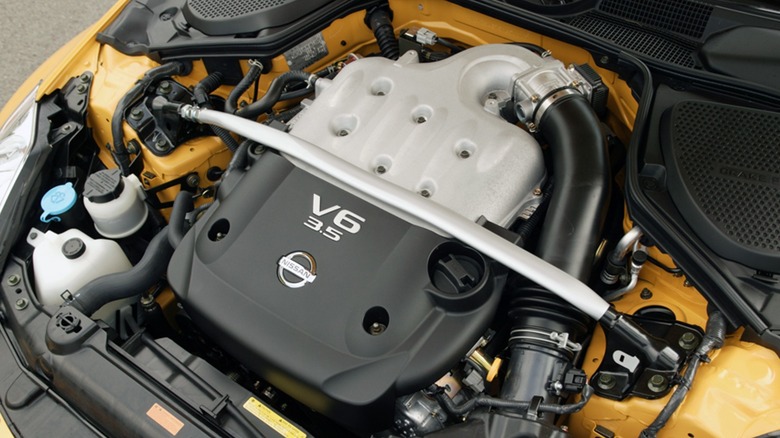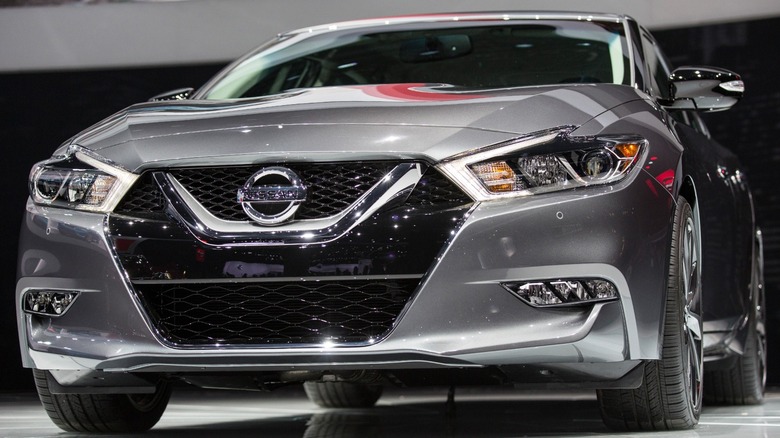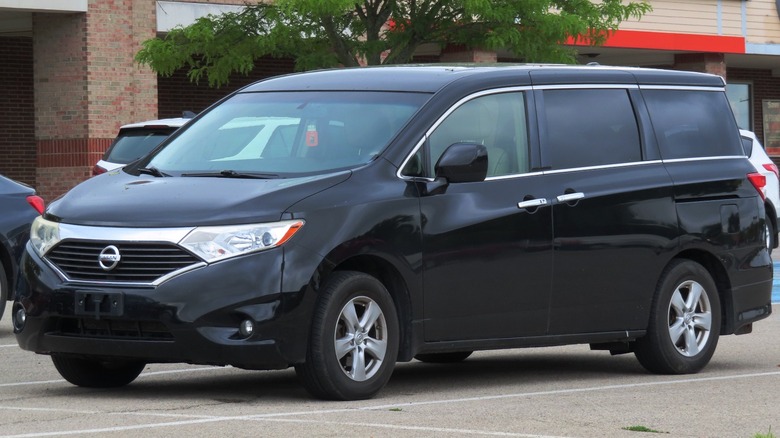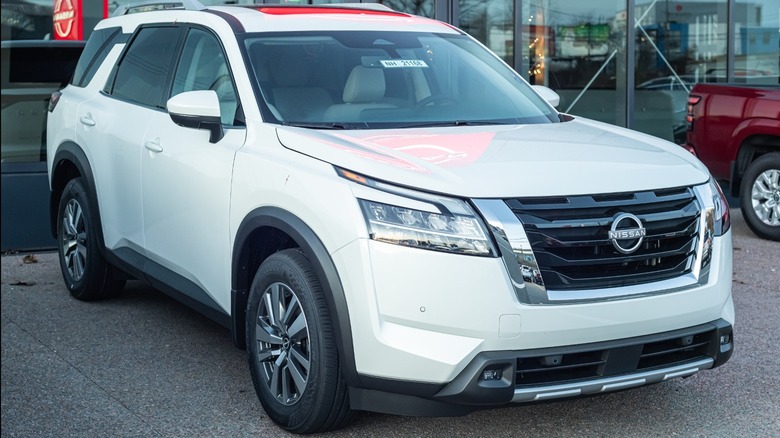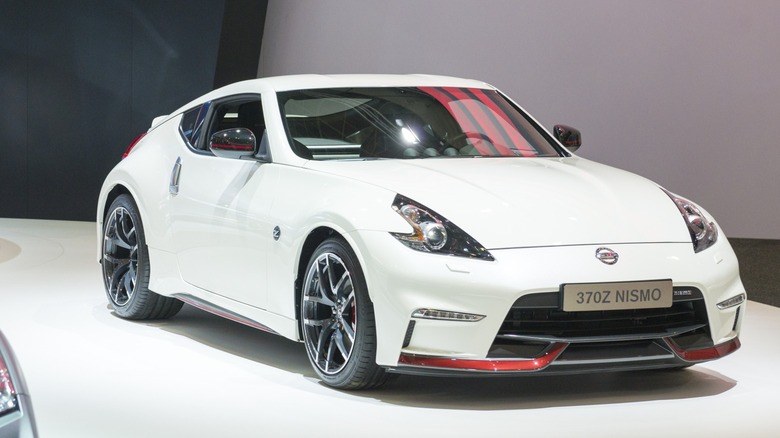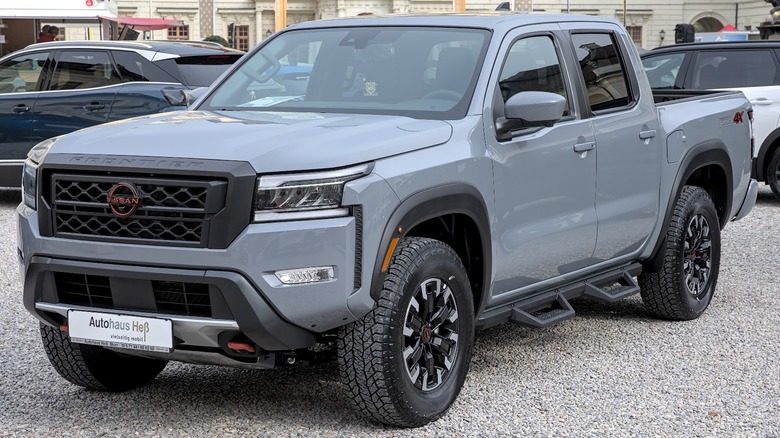5 Nissan Models That Were Powered By The Popular VQ Engine
Nissan introduced the VQ engine family in 1994 with the Nissan Cefiro in Japan and the Nissan Maxima in Europe. However, it wasn't until 1996 that we received this engine in the US with the Infiniti i30, which was based on the previously-mentioned vehicles and is one of the best Infiniti cars of all time. Nissan's concept behind the VQ engine was to deliver "Dynamic Performance" and "Life on Board" without compromising safety and the environment.
So, when development began in 1988, its guiding principle was to create an engine that was "as agile as a feather," meaning Nissan engineers wanted to build an "engine that revs smooth and agile." It should be emotional while still delivering excellent fuel efficiency and cleaner emissions. Thus, after six years of development, the VQ engine was born.
Although the VQ engine was first introduced in a mid-sized, front-wheel drive executive sedan, it would soon find itself under the hood of many different types of vehicles – including SUVs, trucks, and even sports cars – thus making it one of the most iconic engines from Nissan, alongside the RB26DETT and the SR20DET.
[ Featured image by Tennen-Gas via Wikimedia Commons | Cropped and scaled | CC BY-SA 3.0 ]
2023 Nissan Maxima
Since the VQ's introduction with the Maxima in 1994, it has continuously used the V6 engine family in its largest sedan offering. So, if you purchase the flagship Nissan Maxima today, you can only get it with the 3.5-liter VQ35DE producing 300 hp @ 6,400 rpm and 261 ft-lbs of torque at 4,400 rpm paired with a CVT. This engine gives the car a 6.3-second 0 to 60 time and a 145 mph top speed.
Nissan actually sells the Maxima as a four-door sports car because of its powerful VQ engine. However, according to our review of the 2016 Nissan Maxima, the first release of this generation, the Maxima is better suited as a touring cruiser than a sports sedan. This is further helped by the VQ's excellent power output, making overtaking at speed hassle-free. Using the VQ engine with Nissan's top-of-the-line full-size sedan shows how refined yet sporty it can be. So much so that it can keep you comfortable over long-distance drives while still delivering the horses you need when you ask it to.
2017 Nissan Quest
The Maxima uses the VQ engine to balance comfort with a sporty drive, but you can also find this powerplant in a more practical people carrier: the Nissan Quest. Although it's no longer available brand-new from Nissan dealers, the 2017 Quest is still a great family car with excellent ride quality that can compete against industry titans like the Honda Odyssey or Toyota Sienna.
The Quest uses the same 3.5-lite VQ35DE from the Maxima but has a lower power rating at 260hp @ 6,000 rpm and 240 ft-lb of torque @ 4,400 rpm. This lower output from the same engine makes it a bit more reliable, as you're not pushing the engine as hard. However, this comes at the expense of performance with a nine-second 0 to 60 time and 134 mph top speed.
However, you don't buy the Quest for its exhilarating driving. Instead, you get it to bring everyone and everything in one trip. And if you want reliability, the VQ engine will give you just that while still ensuring you have the power to haul what you need.
[ Featured Image by MercurySable99 via Wikimedia Commons | Cropped and scaled | CC BY-SA 4.0 ]
2024 Nissan Pathfinder
Nissan discontinued the Quest because of the minivan's falling popularity against the SUV. But even if you don't want an executive sedan or a 'mom-mobile,' you can still get a VQ engine with the mid-size crossover Pathfinder with the VQ35DD. This crossover SUV gets 284 hp @ 6,400 rpm and 259 ft-lb of torque @ 4,800 rpm coupled to a nine-speed automatic. And even if it's using a 30-year-old engine design, Nissan engineers have kept it updated, allowing you to hit 0 to 60 in 7.4 seconds and a 139 mph top speed – good numbers for a large SUV that weighs in at over 4,400 lbs.
The 2024 Nissan Pathfinder is an excellent SUV and family car, allowing you to bring everyone with you without looking like you're driving a boring old vehicle. Despite its weight and performance, you can still get reasonable fuel consumption numbers, with the Pathfinder getting 20 mpg in the city and 23 mpg on the highway, with a combined result of 21 mpg during our testing. This shows how the concept behind the VQ has allowed Nissan engineers to work on it through the years, still providing good power and performance despite ever-tightening emissions requirements. However, it's beginning to show its age when driving on challenging surfaces like snow, as our reading dropped to as low as 12 mpg in those conditions.
2020 Nissan 370Z
The 2023 Nissan Z uses the twin-turbo Nissan VR engine, but its predecessors, the Nissan 350Z and 370Z, used the legendary VQ for almost 17 years. It started in 2003 with the first 350Z using a VQ35DE engine, while the last 370Z, like the 2020 Nissan 370Z 50th Anniversary Edition, used a 3.7-liter VQ37VHR engine that pushed out 332 hp @ 7,000 rpm and 270 ft-lb of torque @ 5,200 rpm.
This naturally aspirated engine gave the 370Z a 4.9-second 0 to 60 time and a top speed of 177 mph, satisfying its driver's need for speed. So, if you wanted a fast Nissan sports car but didn't want to break the bank with the 'Godzilla' Nissan GT-R, you should pick the Z-series coupes or roadsters. With the VQ engine serving as their beating heart, the 350Z and 370Z show how this iconic V6 powerplant could perform when pushed to its limit. Although the VQ engine wasn't designed for turbocharging, you can buy turbo kits for these cars to get even more power out of their engines, as Donut Media did in the Turbo Episode of its Hi Low Nissan 350Z season.
2024 Nissan Frontier
While sports cars push the engine in speed and off-the-line performance, trucks need torque and durability. So, let's look at the other end of the spectrum regarding the VQ engine's application: pickup trucks. The Nissan Frontier, which starts at under $28,000 for the 2022 year model, uses the VQ38DD engine, which outputs 310 hp @ 6,400 rpm and 281 lb-ft of torque at 4,400 rpm. In fact, the Frontier pickup has been using the VQ engine since 2005 with the VQ40DE. This shows that Nissan found the VQ family reliable and didn't feel the need to replace the engine on its pickup trucks for almost 20 years.
Nissan has been using the VQ engine family since 1994 in all manner of applications. From executive sedans to family haulers and sports cars to pickup trucks and SUVs, you can find a Nissan model with the V6 VQ engine as one of (or even the only) engine options. Although the company started using the VR engine for turbocharged V6 cars, this engine model is still related to its predecessor, the VQ engine. Because of this, we expect to see the legendary VQ engine in the years to come. As long as Nissan makes a naturally aspirated V6-powered vehicle, we expect the VQ engine model to sit under its hood.
[ Featured Image by Alexander Migl via Wikimedia Commons | Cropped and scaled | CC BY-SA 4.0 ]
